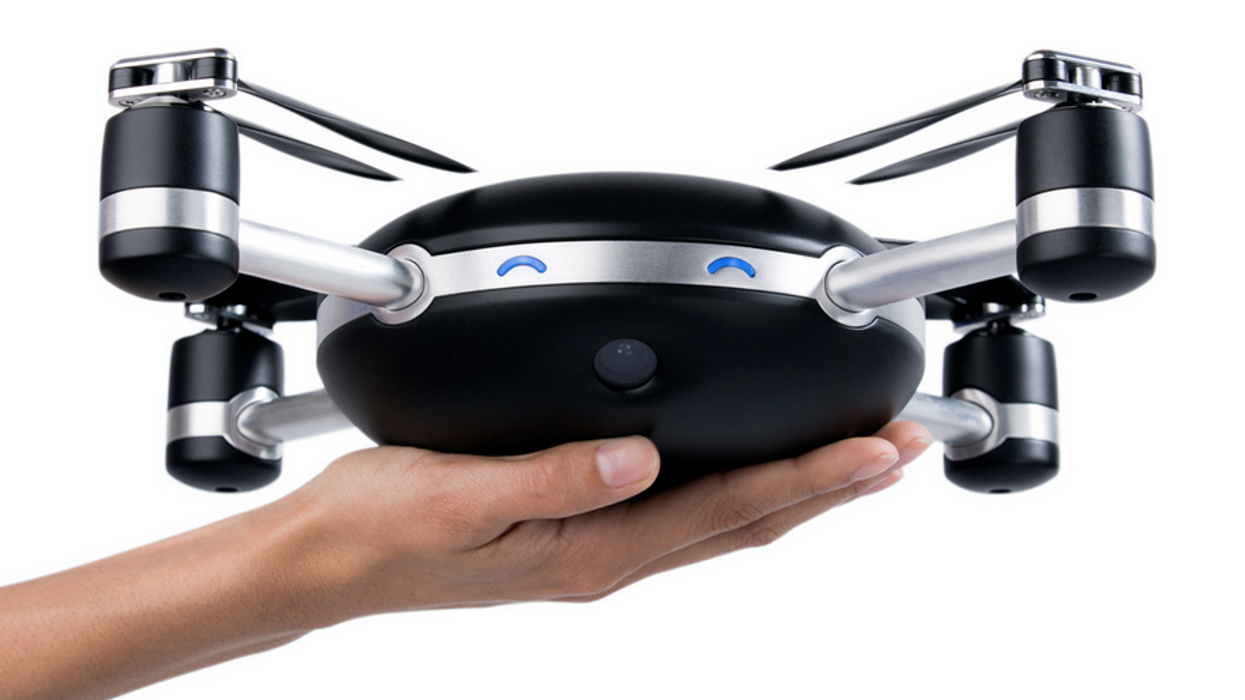Lily Is a Drone that Automatically Follows You Around (This Is How the Robotic Uprising Begins)
Automation is becoming a common feature amongst newer drones. Lily, on the other hand, well -- she's just a stalker, plain and simple.

In the past few months, we've seen a slew of new drones that feature some type of automation. First there was the Ares Drone, which lets users draw flight paths and camera moves on an iPad, moves which the drone then faithfully completes using advanced GPS technology. Then there's the 3DR Solo, which offers complex camera maneuvers like cable-cam flyovers at the push of a button. These drones are still manually-piloted devices for the most part in that there's still some semblance of control. All that is required for users to fly Lily, on the other hand, is a hearty toss into the air. I shit you not. It's a throw-and-go drone.
Lily is unique because it uses a tracking device that you can either carry with you (or wear on your wrist in a waterproof casing). Using that data, Lily always knows where you are and where to position the camera. The drone itself is also waterproof and can take off and land in water.
Here are the tech-specs on the built-in camera included with Lily.
- Video Resolution: 1080p 60 fps / 720p 120 fps
- Video FOV: 94º
- Video Format: H.264 codec, .mp4 file format
- Photo Resolution: 12 MP
- Digital gimballing
- Image stabilization
- Fixed focus
Honestly, even though there are some gimmicky features with Lily -- like insisting that people throw it into the air -- it's definitely a system that shows promise for those wanting nice aerial footage without the learning curve that comes with manually-piloted UAVs. Of course, I'm also concerned that there don't seem to be any manual controls for the system in case you need to take over mid-flight. The seeming lack of built-in safety features to make sure Lily doesn't run into things or people also gives me pause. Still, it seems like a promising system for folks who aren't particularly concerned with manual control.
Lily is expected to begin shipping in early 2016 for a street price of $1000, but you can pre-order it now from the Lily website for $499.











